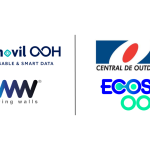Whether CIOs will be ready for the transition to digital marketplaces by 2025 depends on investments in people and in secure tools.
By 2025, companies will have to embrace the “always on” way of working.
According to OneLogin’s survey of 100 CIOs this means curtailing a “bottleneck” of convergence with “ubiquitous connectivity,” “infinite scalability” and sprinkles of automation and artificial intelligence.
“The primary bottleneck we have identified is the companies’ ability to facilitate these relationships — simply and securely.
Using future technologies will rapidly shape the performance ability of businesses and set them apart from competitors. Eighty-nine of the CIOs agreed that AI and machine learning are required tools for responding to customer needs.
But in 2019, nearly three-quarters of technology spend, about USD$2.6 trillion, is expected to be handed to the back office. The back office is where the CIO and IT sometimes feel stuck, but support and maintenance sometimes trump innovative investments.
“Many CIOs are stuck in ‘defining’ the bulk of tech stack themselves, under a great deal of scrutiny from peers, the broader employee base, the CEO, and the board — all in the face of limited budget and headcount,” said Michael Gleason, principal product marketing manager at OneLogin, in an email to CIO Dive.
More often than not, CIOs become the unintended killjoy of business operations when they have to tell nontechnical leaders “no” so that compliance and standards go uninterrupted.
Still, it’s especially easy for employees to bypass IT when pursuing a SaaS tool that works best for them in their individual departments. This introduces risk, scalability concerns, compliance complications and an inaccurate representation of what applications are living in a network.
CIOs will have to act as more of a guide for technology procurement, to appease frontline employees and maintain compliance needs.
Nearly all of the respondents, 97, concluded that in six years, technology sophistication will result in a dispersed workforce across time zones around the world. In response to the expansion of the workforce, 58% of CIOs agreed that remote work will increase.
At the same time, 94% of CIOs agreed that humans and bots will comprise the workforce. But the increase in automated workloads means CIOs are concerned and relieved with its prospects, “Machine identities are just as susceptible — if not more susceptible — to account compromise,” said Gleason.
Whether or not CIOs will be ready for the transition to digital marketplaces by 2025 depends on “a number of investments in people, process, and technology need[ed] to be made to fully unlock the promises,” said Gleason. The “dynamic marketplace,” or an emerging commercial ecosystem,” is the intersection of new technologies, the workforce and the workplace, according to OneLogin.
“The primary bottleneck we have identified is companies’ ability to facilitate these relationships — simply and securely,” according to Gleason.
source: http://www.ciodive.com
MARKETING Magazine is not responsible for the content of external sites.







